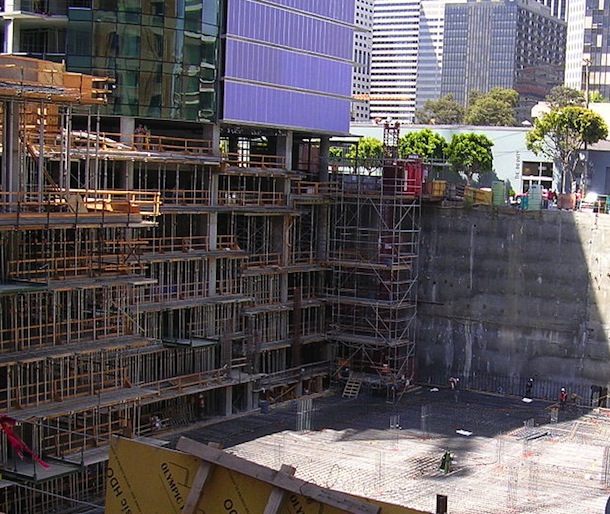Engineering and construction CEOs are more optimistic this year than in previous years, according to PwC’s 2014 Global CEO Survey. Forty-one percent of respondents expect to grow over the next 12 months, up from 31% last year.
This and other big-picture facts are available in the survey, which provides multiple “snapshots” of the engineering and construction sectors, including growth markets, government impact on the industry, transformative global trends, and concerns about sustainability and climate trends.
Here are some of the snapshots we found the most interesting (read the full report):
- 50% of CEOs in the engineering and construction sector believe the global economy will improve over the next 12 months; 9% believe it will decline
- 78% of sector CEOs are concerned about how governments will respond to deficit and debt in the next year—this is the concern that the highest number of engineering and construction CEOs reported worrying about
- 76% of sector CEOs are worried about high and volatile raw material prices
- Concerns about infrastructure gaps are a consistent concern—47% of sector CEOs reported concerns that inadequacy of infrastructure could hurt growth, 50% think that infrastructure think it should be one of their government’s top 3 priorities, and 41% feel that the government is ineffective (as opposed to 33% who believe that the government is effective)
- The U.S. topped the list of growth markets, and the Middle East ranked much higher as growth markets for engineering and construction CEOs than for other sectors
- Cost reduction heads the list of restructuring activities
- 69% of sector CEOs believe that technological advances such as the digital economy, Big Data, and social media will be the biggest transformative trend for their businesses in the next year
- E&C CEOs are significantly more worried about the availability of key skills in their workforces than are other industries.
- 89% of E&C CEOs say it’s important for their company to try and reduce their environmental footprint.
- 59% of E&C CEOs believe that resource scarcity and climate change will transform their business
For more, read the full report.
Related Stories
| Apr 12, 2011
Mental hospital in Boston redeveloped as healthcare complex
An abandoned state mental health facility in Boston’s prestigious Longwood Medical Area is being transformed into the Mass Mental Health Center, a four-building mixed-use complex that includes a mental health day hospital, a clinical and office building, a medical research facility for Brigham and Women’s Hospital, and a residential facility.
| Apr 12, 2011
Miami courthouse design does justice to children and the environment
Suffolk Construction broke ground recently for the Miami-Dade County Children’s Courthouse, a $328 million project the firm has a 30-month contract to complete.
| Apr 12, 2011
Long-awaited San Francisco center is music to jazz organization’s ears
After 28 years, SFJAZZ is getting its first permanent home. The San Francisco-based nonprofit, which is dedicated to advancing the art of jazz through concerts and educational programs, contracted local design firm Mark Cavagnero Associates and general contractor Hathaway Dinwiddie to create a modern performance center in the city’s Hayes Valley neighborhood
| Apr 12, 2011
Entrance pavilion adds subtle style to Natural History Museum of Los Angeles
A $13 million gift from the Otis Booth Foundation is funding a new entrance pavilion at the Natural History Museum of Los Angeles County. CO Architects, Los Angeles, is designing the frameless structure with an energy-efficient curtain wall, vertical suspension rods, and horizontal knife plates to make it as transparent as possible.
| Apr 12, 2011
BIM Grows Up: Separating Hype from Reality in a 3D World
While BIM adoption still lags in both design and construction, some enterprising owners, architects, and contractors are unlocking the potential of this dynamic technology.
| Apr 12, 2011
Metal cladding: Enhancing design with single-skin panels, MCMs, and IMPs
Single-skin metal panels, metal composite panels, and insulated metal panels can add both aesthetic and functional value to your projects, if you use them correctly.
| Apr 12, 2011
American Institute of Architects announces Guide for Sustainable Projects
AIA Guide for Sustainable Projects to provide design and construction industries with roadmap for working on sustainable projects.
| Apr 11, 2011
Wind turbines to generate power for new UNT football stadium
The University of North Texas has received a $2 million grant from the State Energy Conservation Office to install three wind turbines that will feed the electrical grid and provide power to UNT’s new football stadium.
| Apr 8, 2011
SHW Group appoints Marjorie K. Simmons as CEO
Chairman of the Board Marjorie K. Simmons assumes CEO position, making SHW Group the only firm in the AIA Large Firm Roundtable to appoint a woman to this leadership position
| Apr 5, 2011
Zaha Hadid’s civic center design divides California city
Architect Zaha Hadid is in high demand these days, designing projects in Hong Kong, Milan, and Seoul, not to mention the London Aquatics Center, the swimming arena for the 2012 Olympics. But one of the firm’s smaller clients, the city of Elk Grove, Calif., recently conjured far different kinds of aquatic life when members of the City Council and the public chose words like “squid,” “octopus,” and “starfish” to describe the latest renderings for a proposed civic center.















